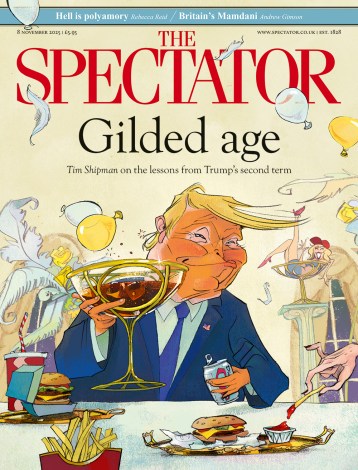What is folk art? It is usually defined as being made by ‘the people’ as opposed to by academically trained artists. Its 19th-century admirers liked to emphasise that it was made for love, not money, and was therefore beyond vulgar commodification. It was heartening to think that in Sweden a young lover would carve a present for his wife-to-be while in return she would make and embroider him a linen shirt. As one Victorian collector explained, the results would be beautiful because ‘the Peasant, perfectly unconscious of any Art principles, does instinctively the right thing’. But England, dominated by getting and spending, posed problems, and it was acknowledged that English folk art was in short supply.
Advanced farming methods meant that we lacked a landed peasantry with the time and the energy to weave and whittle in the long winter evenings. In any case the English ‘folk’ were uncertain guardians of their fragile traditions. Greyhound racing and pigeon fancying outfaced Morris dancing. Cecil Sharp and other collectors of traditional song found, disappointingly, that raucous music-hall tunes were being sung in the remotest villages.
By the 1930s and 1940s the term ‘popular art’ seemed a more realistic term. The designer Enid Marx identified a vernacular tradition that had survived the industrial revolution and, in fact, had drawn inspiration from it. For her, popular art was ‘hard to define though easy enough to recognise when seen’. It encompassed samplers, Staffordshire flatbacks, lustre wares, ship’s figureheads, fairground decorations, farm wagons, sign writing, gypsy caravans, bargees’ art, horse brasses, tinsel pictures and other examples of printing such as broadsheets and chapbooks, patchwork and quilting — all relatively tasteful and eminently collectable.
Marx identified a marked decline in the surviving manifestations of popular art by the end of the second world war: ‘The “innocent eye” is disappearing,’ she declared. But the artist Barbara Jones was more forgiving towards the cruder, brasher examples of the genre. In her show Black Eyes and Lemonade, organised for the Festival of Britain in 1951, she included contemporary objects that Marx would have found impossibly vulgar — a fireplace tiled in the form of an Airedale dog and the famous ‘Talking Lemon’ used to advertise Idris lemon squash.
What constituted a people’s art was, and is, highly relative. By the late 1950s the Independent Group, meeting regularly at the ICA, had identified another vernacular that was rooted in American consumer culture and was completely at odds with the insular vision of Enid Marx and Barbara Jones. But, in general, the focus shifted towards working-class art, taking in trades union banners and creative activity directly linked to the industrial workplace. In 1994 Emmanuel Cooper’s exhaustive The People’s Art offered this kind of politicised version of folk art, in which social inclusion was of more importance than Enid Marx’s formalist ‘forthrightness, gaiety and delight in bright colours’.
And now we have Folk Archive — a touring exhibition of videos, photographs, paintings, drawings and objects put together by two artists, Alan Kane and Turner Prize-winner Jeremy Deller. It reflects the concerns of many contemporary artists, being strongly documentary and ethnographic in spirit. Performance is given as much emphasis as collectable objects. Good taste and formalist aesthetics are set aside even if Enid Marx’s ‘forthrightness’ is echoed by Deller’s and Kane’s search for work which is ‘direct’.
There is no attempt to track an ‘authentic’ folk culture (though plenty of traditional rural festivals such as the Egremont Crab Fair in Cumbria are covered). Nonetheless a powerful series of voices comes through. There is much that is poignant about this show, and familiar, too. What is crucial is that the cake decorations, roughly painted snack-bar signs, prostitutes’ phone cards, personalised crash helmets, crop circles, Stop the War posters all announce their homemade status. I think that much of this loud, humorous and crudely made material would have been beneath the notice of early aficionados of popular art. But the Folk Archive stands for something important — creativity outside an increasingly packaged and regulated culture industry. It is something, as Enid Marx observed, that is hard to define though easy enough to recognise when seen.





Comments